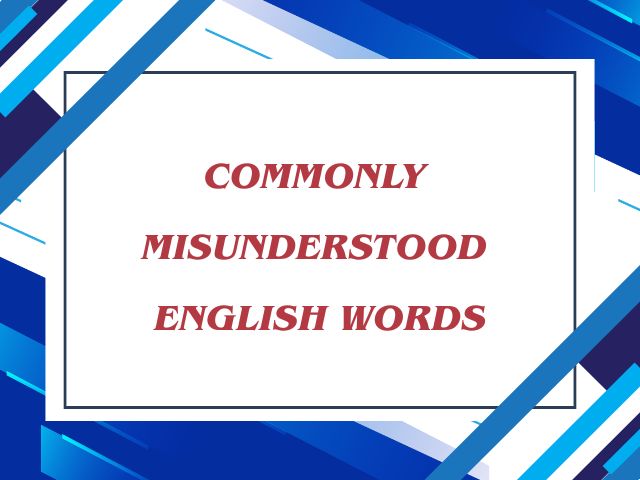Cách Sử Dụng Đại Từ Sở Hữu Và Tính Từ Sở Hữu
Possessive adjectives and pronouns
Trong kỹ năng sử dụng tiếng Anh, việc hiểu và sử dụng đúng đại từ sở hữu và tính từ sở hữu là rất quan trọng. Đối với những người học tiếng Anh, nhất là những người chuẩn bị cho kỳ thi chứng chỉ Anh văn KET PET hoặc tiếng Anh thiếu niên, việc nắm vững cách sử dụng hai loại từ này là một yêu cầu cần thiết.
Việc sử dụng đúng đại từ sở hữu và tính từ sở hữu là cách quan trọng để truyền đạt ý nghĩa chính xác trong tiếng Anh. Kỹ năng này không chỉ giúp bạn vượt qua các kỳ thi anh văn KET PET hoặc tiếng Anh thiếu niên mà còn giúp bạn giao tiếp hiệu quả trong cuộc sống hàng ngày.
1. Tính từ sở hữu (possessive adjectives) gồm my, your, his, her, its, our, your, their.
I hear your brother is in love with my sister.
Has Ellen phoned her mother?
What’s your phone number? ~ Our home number is 935 441 635.
Ta có thể sử dụng your, giống như you, để nói với một hoặc nhiều người:
Everyone, put away your sweets and Jim, take out your book.
Cần lưu ý là các tính từ này chỉ có một hình thức duy nhất:
your book your books (Không nói yours books)
2. Đại từ sở hữu (possessive pronouns) gồm mine, yours, his, hers, ours, yours, theirs, và từ sở hữu dùng để hỏi (possessive question word) là whose:
Is this Jane’s bag? ~ No, this one is mine; that one is hers.
Their flat is bigger than ours.
Whose book is this? / Whose is this book?
(Không có đại từ tương ứng với tính từ sở hữu its.)
3. Ta sử dụng đại từ sở hữu khi ta không cần lặp lại danh từ:
My people like their name but I don’t like mine. (= my name)
Our phone number is 935 441 635. What’s yours? (= your phone number)
Tony and Helen both have dark hair but his is curly and hers is straight.
(= his hair and her hair)
Cần lưu ý đến sự khác biệt giữa tính từ sở hữu its và it’s (hình thức tắt của it is), thí dụ:
I saw the car but I didn’t get its number.
Whose is that car? ~ It’s Peggy’s.
Thực hành văn phạm
1. Ta sử dụng tính từ sở hữu và đại từ sở hữu để nói về những gì ta sở hữu:
My new mobile’s an LG Prada. What make is yours?
~ Mine’s a Sony, like my MP3 player.
2. Ta sử dụng tính từ sở hữu và đại từ sở hữu để nói về các mối quan hệ với gia đình, bạn bè và đồng nghiệp:
My dad’s stronger than yours.
His manager is very helpful – mine isn’t.
3. Ta sử dụng tính từ sở hữu và đại từ sở hữu để nói về các bộ phận cơ thể:
Jeff has hurt his hand. (Không nói the hand)
Bend down and touch your toes. (Không nói the toes)
~ Anna can touch hers, but I can’t touch mine.
4. Ta sử dụng tính từ sở hữu và đại từ sở hữu để nói về suy nghĩ, cảm xúc, ý tưởng, v.v. ta có:
When you told Molly she was fat, you really hurt her feelings.
It wasn’t my idea to get the bus – it was yours.
Ta thường sử dụng tính từ sở hữu với left và right mang ý nghĩa to the left of me/you v.v. . .:
He’s on my left
Bài tập:
A. My family
Use possessive adjectives to complete this dialogue.
LIAM Have I shown you these photos of (0) my family?
ANNA No, you haven’t. I’ve never seen any photos of (1) . . . . . . . family.
LIAM Look at this one. Here you can see me in the middle and on (2) . . . . . . . left is (3) . . . . . . . brother, Richard.
ANNA Is (4) . . . . . . . brother older than you?
LIAM Yes, he’s 32. Next to him is (5) . . . . . . . wife. (6) . . . . . . . name is Sarah and she’s holding (7) . . . . . . . new baby. On the left of the picture is Tilly and (8) . . . . . . . husband, Dave.
ANNA Ah, yes, I’ve met Dave (9) . . . . . . . family lives in Australia.
LIAM (10) . . . . . . . grandparents – my dad’s parents – are sitting at the front. Richard and Sarah’s older children are sitting on (11) . . . . . . . knees.
ANNA And where are (12) . . . . . . . parents?
LIAM Mum and Dad are in this other photo here, look . . .
B. Sharing
Possessive pronoun or possessive adjective? Choose the appropriate words to complete the story.
When I was a kid, (0) my / mine sister and I always got the same presents. We both got a dress, for example, but (1) mine / my was green and (2) hers / her was pink. One year, (3) ours / our parents got us kites, but they were exactly the same. There was no way to know whose was whose. One day, I was playing with (4) my / mine in the garden, and I broke it, just a little bit. I didn’t tell anyone, but I went to (5) my / mine sister’s room and swapped it for (6) her / hers. The next day, (7) our / ours family went to the beach. There were some other children there and they loved (8) our / ours kites. (9) Mine / my sister saw the kids and said, ‘They haven’t got a kite, I’m going to give them (10) my / mine.’ I felt terrible. (11) Mine / My sister has always been nicer than me!
C. Hobbies
Complete this dialogue by putting a possessive adjective, a possessive pronoun, who, whose, it’s or its in each gap.
ZOE What’s (0) your favourite hobby?
ZAC Swimming. What’s (1) . . . . . . .?
ZOE My sister and I are into skateboarding. We’ve just got new boards. I bought a British one but (2) . . . . . . . is American.
ZAC (3) . . . . . . . is best?
ZOE I think (4) . . . . . . . is, of course! Grace got an American one because she says (5) . . . . . . . wheels are stronger, but (6) . . . . . . . board doesn’t feel very different from mine. And I think (7) . . . . . . . a horrible colour too!
ZAC Isn’t skateboarding dangerous? (8) . . . . . . . mum won’t let me try it.
ZOE Not if you’re careful like me, but Grace broke (9) . . . . . . . arm last year.
ZAC And do you go in for competitions?
ZOE Yeah, we do these team events (10) . . . . . . . team came third the last time we entered. (11) . . . . . . . exciting to skate against other people.
ZAC Perhaps you’ll do even better with (12) . . . . . . . new boards.
Đáp án:
A.
1. your 5. his 9. His
2. my 6. Her 10. My
3. my 7. their 11. their
4. your 8. her 12. your
B.
1. mine 5. my 9. My
2. hers 6. hers 10. mine
3. our 7. our 11. My
4. mine 8. our
C.
1. yours 5. its 9. her
2. hers 6. her 10. Our
3. Whose 7. it’s 11. It’s
4. mine 8. My 12. your
Thầy Sơn




